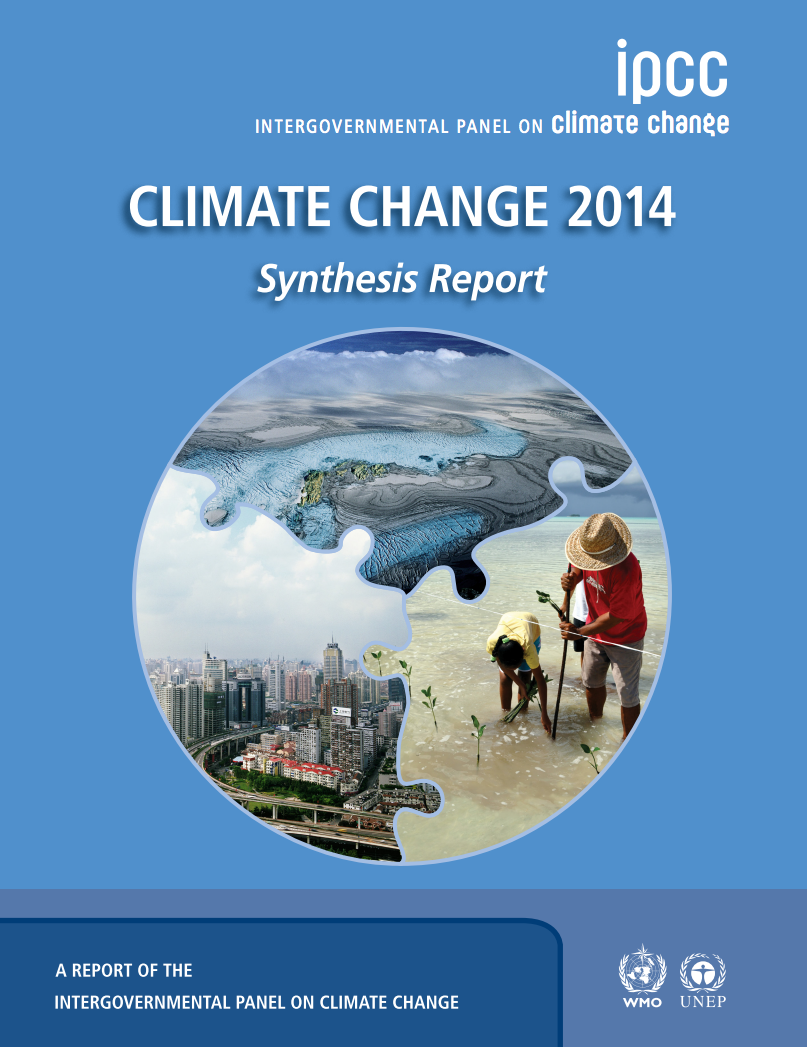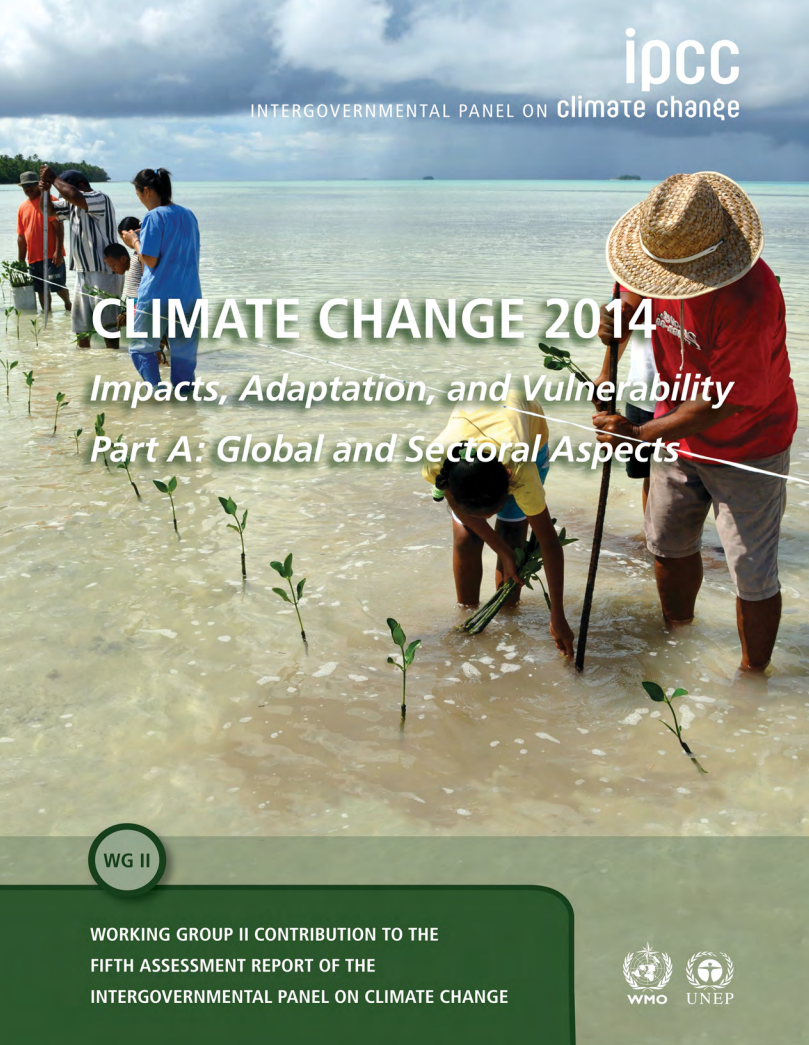Climate Change 2014 Synthesis Report
This document is the result of coordinated and carefully connected cross Working Group efforts to ensure coherent and comprehensive information on various aspects related to climate change. This SYR includes a consistent evaluation and assessment of uncertainties and risks; integrated costing and economic analysis; regional aspects; changes, impacts and responses related to water and earth systems, the carbon cycle including ocean acidification, cryosphere and sea level rise; as well as treatment of mitigation and adaptation options within the framework of sustainable development.




